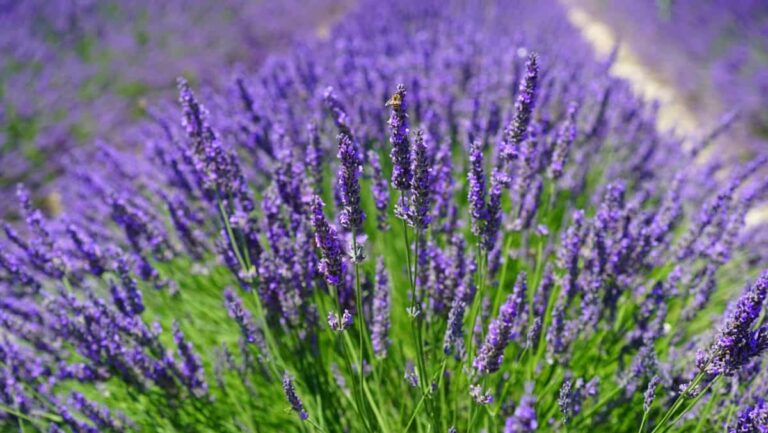Roses are a timeless gift, and many wonder if those beautiful bouquets can become more than a fleeting gesture. Jason from Fraser Valley Rose Farm tackled this intriguing question in a recent video, explaining how to propagate roses from cut flowers. While it’s possible to grow roses from bouquet stems, the process requires careful attention to detail, and the odds of success depend on several factors. Let’s break down the steps, challenges, and tips for turning a bouquet into thriving rose plants.
Can You Propagate Roses from a Bouquet?
The short answer is yes, but it’s not as straightforward as propagating roses from a shrub in your garden. Cut flowers, especially those sourced commercially, are grown and treated in ways that can affect their viability for propagation. Still, for those interested in plant propagation as a hobby or looking to preserve a special bouquet, it’s a rewarding experiment.
Preparing the Cuttings
Choosing Suitable Stems
The first step is selecting stems that are firm but still slightly flexible. Overly soft or bendy stems are unlikely to root successfully. Jason demonstrated a simple bend test: if the stem buckles when gently pressed, it’s too soft and should be discarded. Ideally, choose stems that have a balance of softness and firmness—commonly referred to as semi-hardwood.
Identifying Nodes
Nodes are critical for successful propagation. These are the points along the stem where leaves emerge, and they often contain dormant buds capable of producing roots. When preparing cuttings, make your bottom cut just below a node and ensure each cutting has at least two nodes—one at the base and another toward the top.
Trimming the Cutting
Each cutting should be around 6–7 inches long. Remove any lower leaves, but keep one or two leaves near the top. To reduce moisture loss and improve rooting chances, trim larger leaves by cutting them in half. Discard the flower itself, as it diverts energy from rooting.
Challenges with Bouquet Roses
Roses sold as cut flowers are often grown under conditions that make propagation trickier than with garden roses:
- Growth Conditions
Commercial roses are typically grown in warm, controlled greenhouse environments, often in regions like South America. This rapid, soft growth can result in weaker stems less suited for propagation. - Handling and Shipping
By the time bouquet roses reach consumers, they’ve often been cut for weeks and treated with preservatives to prolong freshness. These factors reduce their viability as cuttings.
Despite these challenges, success is possible with proper selection and care.
Rooting the Cuttings
Using Rooting Hormone
Dip the base of each cutting into a rooting hormone powder. Products containing IBA (indole-3-butyric acid) are particularly effective for roses. Tap off any excess powder to avoid overapplication.
Potting Medium
Choose a well-draining potting mix such as peat and perlite, coco coir, or composted bark mulch. Stick the cuttings into the soil, ensuring the bottom node is buried and the cutting is supported upright. Avoid planting them too deep; just enough to keep them stable is sufficient.
Humidity Control
Maintaining consistent humidity is essential. Jason used an inverted plastic storage bin with ventilation holes drilled into the lid as a makeshift humidity dome. You can also use individual pots covered with cut-off milk jugs or plastic bottles for a similar effect.
Temperature and Light
Keep the cuttings in a stable environment with temperatures around 20°C (68°F). Bright, indirect light is ideal, though supplemental LED lighting can also help during low-light seasons.
Progress and Results
After three weeks under the humidity dome, Jason checked the cuttings and found they had rooted beautifully. By gently tugging on the cuttings, he could feel resistance—a good sign of root development. Upon closer inspection, the cuttings showed healthy roots extending through the potting medium.
Of the 12 stems Jason started with, only 8 were viable due to the softness of the others. Impressively, all 8 viable cuttings successfully rooted, demonstrating the potential of this method when done carefully.
Key Takeaways
- Selection is Crucial
Not all stems in a bouquet will be suitable for propagation. Choose those with firm, semi-hardwood stems and avoid overly soft or damaged ones. - Timing Matters
Attempt propagation after the flowers have faded. Fresh blooms divert energy away from rooting. - Humidity and Stability
Maintaining a humid environment and stable temperatures significantly increases the chances of success. - Patience is Key
Rooting takes time, and not every cutting will succeed. Focus on quality over quantity when selecting and preparing stems.
When to Use This Method
Propagating roses from a bouquet may not be the most reliable way to grow roses, but it offers a valuable learning experience for plant enthusiasts. It’s also a meaningful way to preserve a special bouquet, such as roses from a wedding or other significant event.
If you’re serious about growing roses, Jason suggests starting with plants from a nursery or propagating cuttings directly from garden shrubs. These sources are typically more vigorous and better suited for rooting.
Final Thoughts
While propagating roses from a bouquet is challenging, it’s entirely possible with the right approach. Jason’s step-by-step demonstration highlights the importance of selecting viable stems, using proper techniques, and maintaining a suitable environment. For those eager to try, the experience can be both educational and rewarding.




